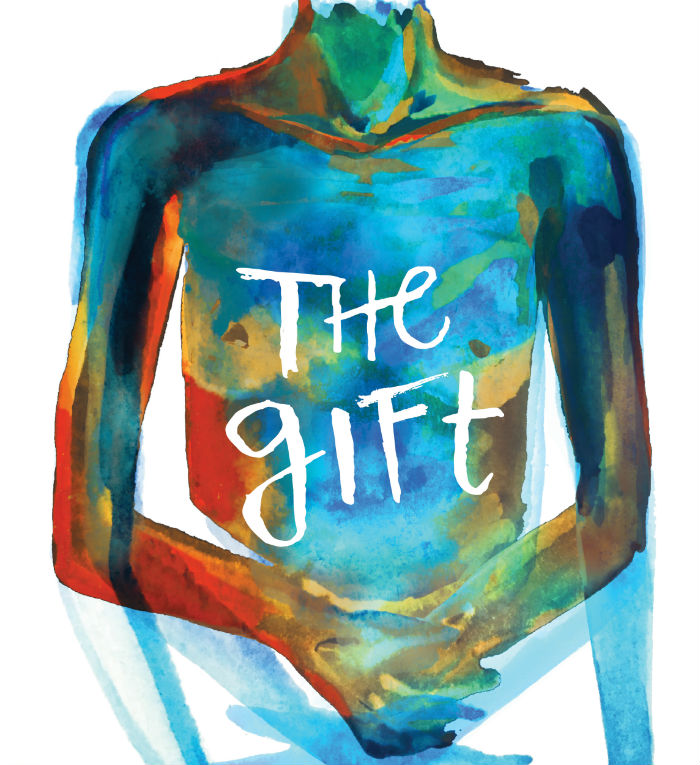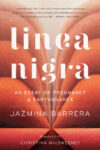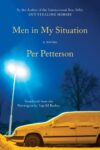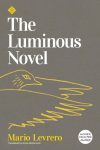
This essay was first made available earlier this year, exclusively for our Patreon supporters. If you want to support Full Stop’s original literary criticism, please consider becoming a Patreon supporter.
Contemporary autofiction has generated a great deal of buzz for over a decade, but, curiously, we still don’t have a firm grasp on what it is. While some agreement has emerged about its aesthetic properties – an amorphous narrative, attention to quotidian detail, and the creation of the work as a subject in the work – there is a fundamental dispute about how it should be classified. Autofiction represents a thorny conceptual challenge as it straddles two categories – fiction and non-fiction – that are used to make primary distinctions among literary prose genres. By all rights, autofiction should constitute a genre at the same high level of abstraction as those two, but in the absence of such a revolutionary development we are left with an inevitable debate over whether it’s a subgenre of one or the other.
With few exceptions, publishers designate works of autofiction – including such touchstones as I Love Dick, How Should a Person Be? and the My Struggle series – as novels, a status that is reinforced by authors and some critics who insist on the fictionality of autofiction. In some measure, this is a response to ordinary readers who regularly conflate the author and narrator into a single subject and read autofiction as though it were memoir. Certain critics are also “guilty” of this mode of reception, especially if they do not agree with the values of the work they’re evaluating. Writing on the Vulture blog, Christian Lorentzen points out that negative assessments of Sheila Heti’s Motherhood ignore its novelistic features in favor of picking apart, in highly personal ways, Heti’s views on having a child.
Both sides in this dispute have ample evidence for making their case. Works of autofiction are labeled as novels and often take liberties that strain the bounds of verisimilitude – like Karl Ove Knausgaard’s otherworldly feats of memory. On the other hand, they are written in a confessional mode that mimics mainstream memoir by creating an equivalency between the author and the narrator/protagonist. And what’s more, such conflation isn’t disrupted because autofiction writers decline the postmodern project of investigating the conflicted relationship between fact and fiction. Instead, they focus on building up authentic accounts of subjective experience.
But just because contemporary autofiction doesn’t spotlight the instability of literary texts does not mean it has entirely evolved beyond its grounding in 1970s postmodern aesthetics. After all, it is still staging an encounter between what’s real (auto) and what’s not (fiction) even if it does not pursue the implications of that volatile conjunction. To break the impasse in the reception of autofiction, or at least to suggest another perspective, we may read the works themselves in terms of the conflict between these two constituent elements.
Yet what seem like a simple proposition – it’s called auto-fiction, after all! –leads to some challenging analytical terrain. Bringing fact and fiction into the same frame makes it necessary to reflect on the unstable foundation of autofiction’s claim to authenticity. It means returning to the issue of the porous line between fact and fiction, not for the sake of play or a textual lesson, as in the postmodern text, but in order to understand the ethics of autofiction. What if there is a great distance between an author’s real life and the way it’s represented on the page? What kind of accountability, if that’s the case, should the reader expect from the author? More fundamentally, is authorial honesty, which is the necessary bedrock of an authentic account, even possible in a work of autofiction?
A recent book – Barbara Browning’s The Gift – takes up these difficult questions through a narrative that allegorizes the contradictions and ethical conundrums of autofiction. The narrator is Barbara Anderson; like Browning herself, she is a professor of performance studies at NYU. The Gift is set a few years after the Great Recession and the lasting instability of that event leads Barbara to generate a Marcel Mauss-type artistic gift economy with the hope that such local aesthetic activism “would spill over into the larger world of exchange.”
Barbara sends gifts – most notably lo-fi ukulele covers – to family and friends as well as the numerous strangers she befriends serendipitously online. Her main correspondent is Sami, an “Indo-Prussian musical prodigy” with a gift for the ukulele and a tragic life (he’s a divorced amputee with Asperger’s). From the outset, there are some serious red flags about Sami. The relationship begins when Barbara, late one night, stumbles upon his bare-bones website and sends him a message. Sami quickly responds and they go back and forth until Barbara realizes that he’s in Cologne where it’s 6am and “it’s a little weird” that he’s up and chatting away. Sami responds without addressing the concern, but Barbara, like the reader of a compelling work of autofiction, rolls right over this complication and takes Sami at face value.
Their relationship quickly develops into an intense and mutually-satisfying collaboration, but it does not last. When Barbara, in the second half of the book, decides to visit Sami in Germany, a friend who’s learned of her plan strongly suggests that she may be the victim of a catfishing hoax. She’s not deterred, though, and travels to Cologne, where Sami refuses to see her. Following this disappointment, Barbara attempts to figure “Sami” out and the resulting correspondence grafts the particulars of this personal drama onto larger questions of authenticity, ethics, and the tricky divide between lying and fiction.
What does it feel like to learn that the person you’ve come to know intimately may not be real? For Barbara, it’s a disorienting experience; she uses that word several times in describing how she feels, even though, as she notes, she of all people should be able to “collaborate with a fictional person.” She’s a writer after all, creating believable characters with fully-developed individuality is a major, exhilarating aspect of her trade. But in this case she’s on the other end of the power dynamic, and says that she feels like “a character” in the drama she thought she understood. More accurately, though, we can think of her as a reader who has suddenly become very vulnerable because the story “Sami” has told her no longer holds together. She has invested herself in the facticity of “Sami’s” personal life, as autofiction encourages the reader to do, but when the facts of that life become imaginary her own sense of self is decentered.
As Barbara grapples with the implications of the betrayal, she begins thinking reflexively of her own novelistic practice as a counterpoint to “Sami’s” disingenuousness. She proposes that her fictions, unlike his lying, are ultimately rooted in truth: “Even in my fiction, if I say, ‘This really happened,’ then it’s true. It really happened” (168). The fictional framing of her writing, in other words, does not preclude its connection to her real self. She tells “Sami,” “It’s very easy for you to check, but to quote Popeye, I yam what I yam.” It is striking that at the moment of asserting a fundamental relationship between her textual and real self, she produces an allusion that undermines that very assertion. “I am” turns into a pun, a yam, which throws into question the kind of sincere transparency Barbara has claimed for herself.
When this novel stages an encounter between fact and fiction – or, put another way, when it realizes the duality of autofiction – it becomes unsettled and conflicted. Barbara’s entanglement with “Sami” informs The Gift with the textual paranoia of postmodern literature. This comes to the fore, ironically, in the revelations Barbara makes to affirm the honesty of her narrative. These range from the obvious (Barbara Anderson is a mask for Barbara Browning) to the truly unexpected (Barbara’s lover Olivia, we learn toward the end of the book, is a fictional construct). Of course, the necessity of these revelations means the novel has not, from the start, chronicled what happened. Also, each revelation, far from shoring up the ground of the novel, only makes the reader ask: what else is there to be revealed? And can any of it be actually believed? There’s no end to the doubt, and so the reader of The Gift comes to have a relationship to the novel that’s homologous to Barbara’s vexed relationship with “Sami.”
In other words, disorientation is general, but while that would be a badge of honor for a postmodern novel, that is not the kind of work that The Gift seeks to be. “Sami’s” betrayal is the source of the problem, the event that threatens the integrity of The Gift, and so the novel responds by attempting to draw a veil over the subject. Barbara’s suspicions about “Sami” build, to the point where it seems like he will be definitively unmasked, but then they subside and the novel begins to focus more on her other relationships. There is no climactic unveiling and The Gift, on this score at least, ends in a state of ambiguity. Barbara thus leaves open the possibility that “Sami” is real, which serves to preserve the memory of the satisfying gift-economy that they once participated in.
Ultimately though it’s not possible for the novel to gloss over what it has revealed about “Sami.” The attempt to reassume a mood of trust and belief is heavily qualified, and this goes not only for Barbara’s relationship with “Sami” but also with the reader. Throughout the novel, she has addressed the reader directly, cultivating the kind of straightforward, and very traditional, relationship that is a hallmark of autofiction. But as the book closes, she makes the honest admission that such direct communication is a literary ruse: “I seem to be talking to myself. Before I felt I was talking to you. I’m sorry, it’s just a little difficult sometimes to maintain the illusion.” The Gift is a performative novel in the sense that it doesn’t only describe artistic gift-economies but also seeks to engage the reader in this kind of exchange. Barbara’s admission is especially melancholy, then, because it acknowledges the impossibility of actually connecting with the reader.
By confronting the contradictions and ethical compromises of autofiction, The Gift reproduces an old lesson: the literary text cannot be taken at face value. But instead of being exciting or enlightening, as it was in the heyday of postmodern aesthetics, this bit of wisdom has become very sad. Autofiction’s calling card is a bracing authenticity, but what The Gift shows is that it is most authentic when it reflects on its own precarious nature. Such honest accountability makes for gripping literature and suggests a promising direction for autofiction to take. But what about all those prominent works that aren’t interested in reflexive ethical questions? How should readers engage with them?
Answering this question means returning to the dispute about how autofiction should be categorized. Is it more akin to fiction or memoir? Where does it belong in the landscape of literary genres? I propose that autofiction is best read as a subgenre of memoir: it is memoir that’s enhanced by the tools of fiction. The advantage of such framing is that it allows the reader to experience the immediacy of autofiction to its fullest extent. The text becomes energized when one can believe that its details and admissions – all that loose, rich information – are offered with the real personal life of the author at stake. Crucially, approaching works like How Should a Person Be? and the My Struggle series as autofiction memoirs does not mean abandoning a serious engagement with questions of style. Thinking about the narrator as an actual individual out there in the world can actually heighten a reader’s attention to the formal dimensions of autofictional texts, like the way that affect and narrative shape one another. To be clear, this is not a call for ignoring the uncertain ground on which autofiction rests; rather, it’s about not allowing such awareness to impede a productively “naïve” mode of reading. There’s a lot of knowledge and pleasure to be had from allowing oneself to believe in the illusion of intimate authenticity, and so, to paraphrase Wallace Stevens, the reader of autofiction should believe without belief beyond belief.
Semyon Khokhlov is a writer living in Philadelphia.
This post may contain affiliate links.







